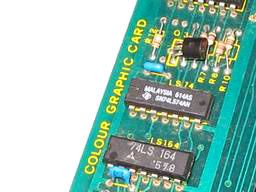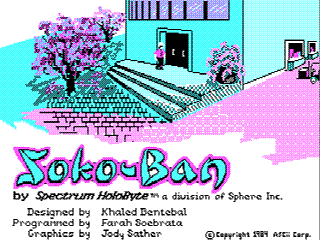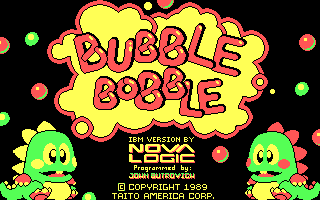The IBM CGA standard....
Obsoletus Instrumentum - The IBM Color Graphics Adapter (CGA) Standard
Nowadays, high resolution color graphics are standard on any computer. Even the cheapest, bargain basement models have high resolution color graphics capabilities built in. We owe this trend to our complete migration from text-based interfaces to graphical user interfaces (GUIs) which have made the computer significantly easier to use than before.
Yet, more than 20 years ago, at the start of the PC revolution, high resolution color graphics and GUIs for the masses were more the stuff of science fiction than reality. In 1981, alongside the original PC, IBM introduced the Color Graphics Adapter (CGA), the granddaddy of all color graphics standards for the PC and its compatibles.
In 1981, alongside the original PC, IBM introduced the Color Graphics Adapter (CGA), the granddaddy of all color graphics standards for the PC and its compatibles.
It was one of two graphics adapters/standards introduced by IBM. The other one is the Monochrome Display Adapter (MDA), which, as its name suggests, was capable of only generating single color text and rudimentary, character based graphics. However, the MDA at the time was cheaper than the CGA, and actually generated higher quality (more readable) text. This made the MDA the adapter of choice for business use. If you wanted color, the CGA was the way to go. Not that there were that many colors for you to choose from. Need I remind you, this was in 1981. Graphics processors with massive amounts of frame buffer memory and high speed interfaces were still decades in the future. The CGA instead used a Motorola MC6845 display controller along with 16 KB of display memory. It interfaced with the host PC via an 8-bit ISA slot.
Graphics processors with massive amounts of frame buffer memory and high speed interfaces were still decades in the future. The CGA instead used a Motorola MC6845 display controller along with 16 KB of display memory. It interfaced with the host PC via an 8-bit ISA slot.
This enabled the CGA to generate 16 colors of 40 column (40x25) or 80 column (80x25) text. In graphics mode, it supports a resolution of up to 640x200 using two colors or 320x200 using four colors out of a palette of 16. This may seem woefully inadequate by today's standards, but it was actually quite a feat in those days. The competing Apple II was capable of generating more colors, albeit at lower resolution.
The 320x200 four color mode was often used for games, although the limited number of colors made the games look somewhat unusual, a trademark of software written for the CGA standard.

Title screen for Soko-Ban. This game uses the magenta, cyan, white and black background color palette.
Title screen for Bubble Bobble. This game uses the red, green, brown and black background color palette.
The CGA lived on until 1984, when it was phased out in favor of the Enhanced Graphics Adapter (EGA) which made its debut alongside the IBM PC AT. The EGA was downward compatible with CGA, but featured an additional 16 color 640x350 high resolution mode. It also had a video memory four to sixteen times larger than the CGA, ranging from 64 to 256 KB. I'll write about the EGA in a future installment of this series.
24 years down the line, the CGA is a dinosaur, and it is highly unlikely you will ever encounter anyone still using it. Still, if anything, its a quaint reminder of how rapid technology has advanced and how it continues to advance to this very day. Our current monster video cards with humongous amounts of memory, multiple pixel pipelines, vertex and pixel shaders, and outrageous cooling solutions, all owe their fundamental existence to their ancestor the CGA, the graphics card which started it all.
Earlier in this series:
The 5¼" drive and floppy disk....
The Pentium and Pentium MMX....
The Sound Blaster 16....
Comments